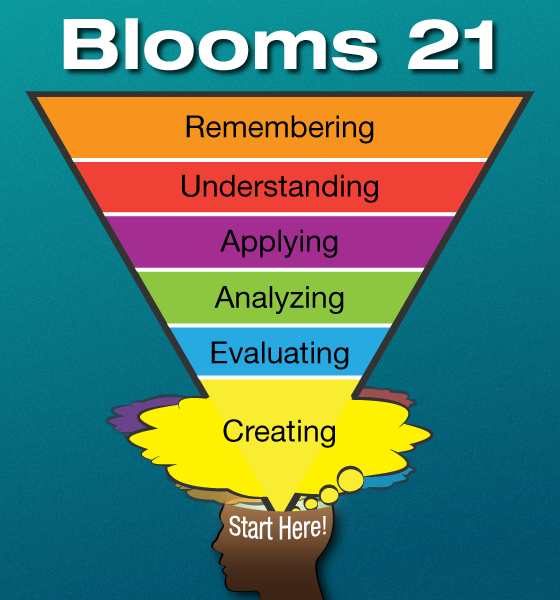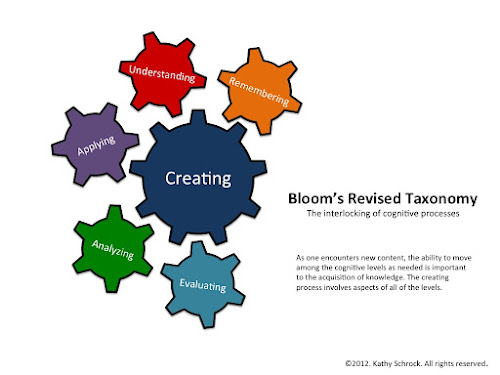Student Self-Direction: A Case Study of My Yr 8 French Class
In a previous post I brain-dumped a description of a model that I called "Landscape/Frame/Gateway".
If anyone can think of a more catchy name, I'm all ears.
I want to give a detailed example of it in this post, specifically a 12-week Year 8 French unit that I teach, along with two colleagues. In the process we'll look at everything from Moodle, to Edmodo, to game-mechanics and badges, to the psychology of freedom and agency in the context of a subject that relies heavily, ultimately, on mastery of some very specific content (aka you can't learn Italian verb conjugations and expect to speak French at the end).
In the process I hope to show how student agency can be radically heightened even while navigating specific content.
I'll finish with footage showing a very typical scene of it all at work. Scroll to the bottom of the page if you want to sticky beak and read the last page first!
The unit of work is built around a project to perform the 'The Three Little Pigs' play in French. The core program is based on the 'AIM' approach which involves gestures associated with every French word. These gestures become a kinaesthetic scaffold and prompt to the students.
#1 The Learning Landscape: is the raw resources, instructions, activities, challenges, indeed learning experiences in the broadest possible sense that are 'on offer' to the students.
Here are some observations on the 'learning landscape':
- Learning management systems such as Moodle tend to become resource repositories. These build and build into a dreadful 'scroll of death' (see right)
- What you put INTO the learning landscape is another question altogether! In this case we have a broad mix of videos, PDFs, vocab lists, spelling challenges, right through to open ended challenges such as 'record a rap song' or 'write your own script'.
- the learning landscape can, by all means, include blank slates for students to define their own challenges.
Our students NEVER SEE the learning landscape in this awful SCROLL OF DEATH format. All they see on the Moodle page is...
#2 The Frame
Next I created a jpeg graphic that establishes a visual metaphor that will map through to the elements in the learning landscape. I created this one using the 'Paper' app on my iPad. I am appalling bad with visuals.
Then I took the jpeg file and used http://www.image-maps.com/ to create hotspots on it, linking through to the URLs of the resources and activities on the learning landscape (see #1).
Here is the visual:
Some comments:
- this operates a little like a board game. It is visual map or metaphor representing the unit.
- consider how computer games give freedom of movement, but which ever direction you head there is a challenge to complete - this is what I'm trying to achieve with the visual.
- I can communicate all kinds of intuitive messages using the visual, such as: A# the unit is founded on the performing of the play (the 4 visuals at the bottom, #1, #2, #3, #4), B# each tree tends to focus on a skill, e.g. getting familiar with the play, speaking French, writing, high level writing, dictionary skills. C# implicitly, climbing up a tree is difficult but inherently rewarding for the view you get up the top (climb every mountain etc, i.e. I am invoking a progress narrative), D# there is also an implicit left to right narrative of progress.
Each of the trees has about 4 or 5 squares on it.
Here are a couple of examples of what students see if they click on a square:
Oh I need to do some more dot points. Here we go:
- Notice I have relinquished any sense of "Okay it's Monday so this is what we're all doing"... the kids can roam freely over the learning landscape, different students engaging in different challenges. Apart from anything else this structure allows differentiation according to mood! (or weather... say a student is hot and bothered, or it's windy and they're all bouncing of the walls) Let along ability, learning preferences, etc.
- AND YET freedom of movement is not absolute. It's not LORD OF THE FLIES. I haven't said "JUST GOOGLE FRENCH AND GET GOING"... I have sequenced challenges together - they can choose any tree but must start from the bottom and work their way up. (In fact I never said this to them and wouldn't INSIST but there is a general structure that I deliberately built into it)
- NOTHING is stopping me from saying, one day: right everyone, drop everything, we're doing theatre sports!
#3 The Gateway
How do we sign off on mandated syllabus outcomes? Well, we make some activities compulsory. In this unit, we informally ensure all students complete the bottom rung of all trees, no matter what they then specialise in. Also, if the students click on the graphic at the top-right, it takes them to their formal assessment task, that every student must complete at some point in the unit.
You can perhaps see why I refer to all this as giving 'structured freedom'.
#4 Tracking System
We all want to know how we're going.
"How am I going here?" I often wonder, about life in general, or even tiny projects. All kinds of questions are bundled up into this. What is success? How would I recognise it if I achieved it?
I call this 'narrative', and it is profoundly hardwired into our thinking. (There are also GOODIES and BADDIES also hardwired into our thinking, which is not insightful at all, but that is beyond the scope of this post!)
The broader answer to the students' question 'how am I going in French?' is complex and comes back to the student in all kinds of ways: ongoing informal feedback from me, interactions in the student 'community of practice', (which, by the way, is extremely active since there is so much freedom of movement through physical space, virtual space, and the curriculum itself), formal feedback via the formal assessment task, and other ways too.
BUT! In addition to these complex feedback mechanisms, everyone loves to tick a box!
So, we give every student a folder with a colour print-out of the graphic on it.
They get a stamp for each challenge as they go:
Now, for the love of all small furry creatures, this is not intended to be a primary extrinsic reward system! I am WELL AWARE of the potential for extrinsic reward mechanisms to wreck intrinsic love of learning. My wife is doing her Masters thesis on this very topic. It is not as easy as extrinsic = bad, intrinsic = good. In fact, it's very hard to define the difference between intrinsic and extrinsic motivation. Motivation is a big fat messy tangle!
I call this sort of logistical system a 'tracking system'. Notice how grittily logistical it is! Printouts, folders, stamps: this is the technology that allows me to track 28 different learning programs for 28 different students. You said you wanted DIFFERENTIATION?!
I am constantly seeing how the students are going, redirecting them to appropriate challenges, and getting them to demonstrate mastery to me before stamping their graphics. In among the bits of paper is a very human coaching process.
#5 Badges with Edmodo
If you're already cross with me, you won't like this!
I defined 24 different badges, based on different combinations of learning landscape completions:
This graphic appears on the French Moodle page. I made it with Snag It. As the students move their cursor over each badge you can see a pop-up explanation appears. If they actually click on the badge they get taken to another graphic showing what they need to do to qualify for that badge:
Now, although it is compulsory for students to keep track of what challenges they have and haven't completed, by coming to me and getting a stamp on their hardcopy graphic print-out, the badge system is optional.
Students can engage with the badge system as much or as little as they wish, and indeed some students engage enthusiastically, and some largely ignore it.
The system has allowed me to completely short-circuit the awful pecking order that develops by this time of year, as the students notice how they are performing compared to the rest of the class and begin to internalise toxic judgments such as 'I'm not good at French'.
#6 The Crazy Charlie Badge
One way I have been able to exploit the badge system is via the Crazy Charlie Badge, which is actually 4 different badges linked in a 'level up' arrangement.
You see, I regularly run 'gesture sessions' - which are basically teacher-lead vocabulary reviews. Here is one in action:
For every session students attend, they get a stamp up in the clouds part of the unit graphic (above the trees). As they attend 5, 10, 15 and 20 of these sessions they 'level up' their Crazy Charlie badges, from Elementary Crazy Charlie, through to Elite Crazy Charlie.
Whichever way students like to learn, they can get rewarded for it.
It is crucially important that I allow students not to play the game, so to speak. No one likes to be trapped within a system.
So, students who thrive on more face to face interaction with the teacher are rewarded for it. Those who do just as well working off a video recording are free to spend their time that way.
#7 Teacher Talk and the Role of the Guru
Right, this is FRENCH. Essentially the students are supposed to be learning to communicate in a new language here. There is only one person in the room who already speaks French and that's me!
This whole model does not deactivate the guru.
Rather it hyperactivates the guru. It liberates me to leverage my expertise, time and energy in more effective and powerful ways: to just the right place at just the right time.
This is what teacher-talk looks like for me:
- getting in amongst the students and offering individualised guidance and input
- being on hand and available just when needed
- running 'opt-in' sessions with small groups of students. I am constantly running these and get a variety of participants depending on where we are in the unit, the mood of the day, etc
- running compulsory sessions (especially for speaking/listening & conversation challenges) but running them 4 or 5 times over a week and telling the students they must attend at least 1. (of course the kids could come back for a repeat if they feel they need it!!)
- and yes, forcing every student to drop everything and all participate in compulsory whole-class activities. This is the closest we get to looking like a traditional teacher-centric class. Because it isn't a dish served up constantly, the students really like it. I'll run a theatre sports session, or similar, and these feel like special events or a rite of passage.
There is still very much a place for teacher-directed input. It's really a matter of context.
Finally, note that every student is having a high quality interaction with me at worst every couple of lessons. When I say high quality I mean an authentic learning-conversation of some kind. This couldn't happen if I was out the front all the time, or putting all my energy into getting the students to do what they're 'supposed to' (and inevitably ensuing conflict.
#8 Building Student Capacity to Self-Direct
If students have been going to school for, say, the last 8 years, and the script is: come in, sit down, and look to the teacher for direction, then you might get some feral behaviour the first time you back off and put students in the drivers seat. There may even be some tantrums.
At my school we've worked hard for some years to build a capacity for self-directed learning in the students. Frankly, this has mostly been a detox process. Students know how to self-direct: they do it from 3pm to 9am weekdays, and on the weekends and public holidays. And school holidays.
So we detox them from the pacifying scripts. We teach them how to make differential choices based on feedback coming in to them from the teacher, the environment (physical and virtual), their community-of-practice (e.g. peers), and their own emotional and cognitive states and preferences.
No one asks whether a toddler is able to direct their own learning.
You stick a toddler in a space and let their curiosity drive them.
Note that you don't stick a toddler in the middle of a desert and let their curiosity drive them.
There's nothing to explore! Instead, you curate an environment for them that is rich in opportunities to learn. Hence all my mucking around with Moodle!
#9 A Vision of What a Human Being Is
There is something profound at stake here. What is our vision of the young person and their relationship with the universe? Is not the universe a fascinating place to be? Oh the places you'll go!
Can we not then trust the engine of inherent curiosity and desire to learn?
So then we have to relinquish control!
#9 The Final Product
To finish with, here is some video footage of my students on the job!
There is so much I want to say about it. It's so much about freedom of movement: through the curriculum, yes, but also through physical space, virtual space. Freedom to be social. Freedom to appropriate tools-at-hand (e.g. using a cupboard for a puppet show, an iPhone as a projector). Freedom to block out the world and go introspective, or to harness extrovert-energy and physical movement. You'll see, in the video, some boys running around like maniacs! But it's beyond doubt: they're in flow. They are doing just what they need, to learn. The learning has seduced them, as well it ought! As well it will, if we trust it enough to let go.





























